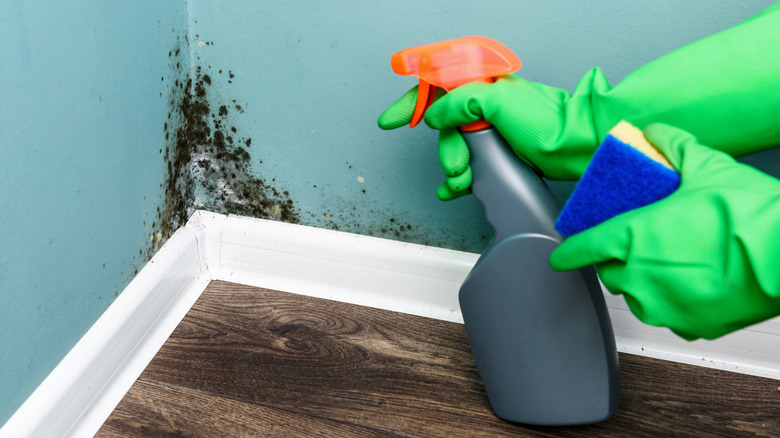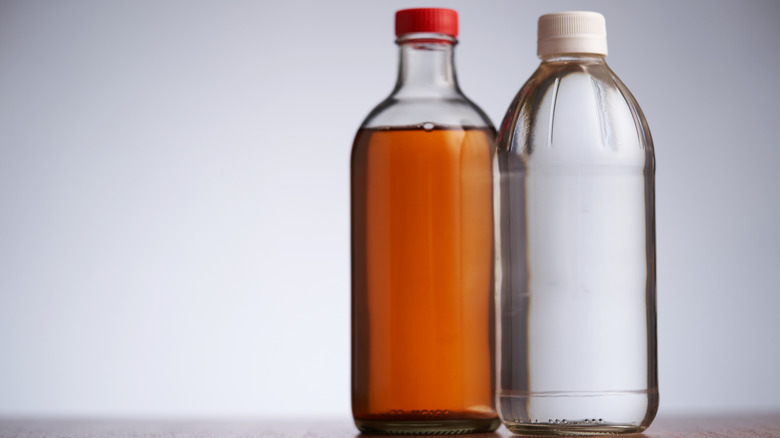The Truth About Using Apple Cider Vinegar To Remove And Clean Mold
Mold is an organic substance that's a vital component in nature, growing in damp areas and doing its part in minimizing plant debris. While mold is welcome in nature, it's most certainly not welcome in our own homes. After all, mildew produces allergens, irritants, and potentially mycotoxins. It's common to find mold growing in places like the bathroom, around your sinks and showers, and really any part of your home that's exposed to moisture.
Fortunately, apple cider vinegar (ACV) is a well-known organic cleaner for your home that many use to combat mold. But the truth is that despite its tenured history and notoriety as a reliable cleaner, ACV has been found to only work sometimes. Sure, vinegar itself is an organic, biodegradable substance equipped with acetic acid, giving it antifungal properties that make it a great disinfectant. However, there's more at play when you look under the microscope.
How apple cider vinegar works on some mold but not others
Apple cider vinegar inhibits mold growth when its acidic properties cause a pH imbalance. Most types of mold thrive with a pH balance between 4 and 7, and ACV has a pH level between 2.4 and 3.5. Putting ACV onto the mold makes a less friendly environment for the mold to grow. Since apple cider vinegar has a pH level below 4, it creates an imbalanced environment, damaging the mold's cell walls and resulting in the mold dying. While it appears that ACV should be able to kill any mold, the reality is that different molds have different cellular wall structures, some of which allow them to continue to grow.
Simply put, apple cider vinegar is not effective against all molds. It sometimes only hinders the growth of mold but does not completely eliminate it from your home. A study conducted in 2015 found that the acidic component in vinegar was found to be great at fighting Penicillium chrysogenum, but not against Aspergillus fumigatus, two commonly seen molds in homes. It's also important to note that there are some surfaces you shouldn't clean with AVC, as it can damage them.

